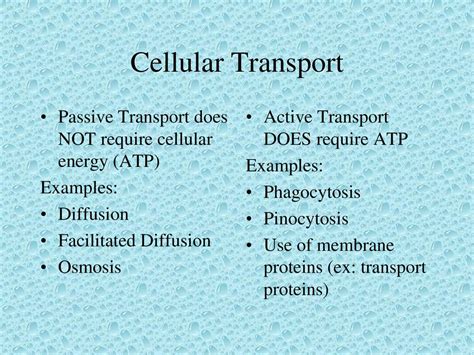chanel diffusion | diffusion across a biological membrane chanel diffusion Channel proteins can aid in the facilitated diffusion of substances by forming a hydrophilic passage through the plasma membrane through which polar and charged substances can pass. Channel proteins can be open at all times, constantly allowing a particular substance into or out of the cell, depending on the concentration gradient; or they can .
Tips for Brewing your own American Amber Ale Grain. The grist for an American amber is usually some sort of American pale malt; usually domestic 2-Row. The base malt should make up anywhere from 85-98% of the grain bill. Crystal malt will add complexity, depth of character, and color to this style. Mid colored crystal (40-60°L).
0 · when does diffusion involve atp
1 · what is channel mediated diffusion
2 · leak channels vs gated
3 · facilitated diffusion channel vs carrier
4 · does diffusion require channel proteins
5 · diffusion across a biological membrane
6 · difference between diffusion active transport
7 · channel mediated facilitated diffusion
$14.99
All channel proteins and many carrier proteins allow solutes to cross the membrane only passively (“downhill”), a process called passive transport, or .Covers selective permeability of membranes, diffusion, and facilitated diffusion (including channels and carrier proteins).
All channel proteins and many carrier proteins allow solutes to cross the membrane only passively (“downhill”), a process called passive transport, or facilitated diffusion.Facilitated diffusion is the diffusion of solutes through transport proteins in the plasma membrane. Channel proteins, gated channel proteins, and carrier proteins are three types of transport proteins that are involved in facilitated diffusion. Facilitated diffusion: Transmembrane proteins create a water-filled pore through which ions and some small hydrophilic molecules can pass by diffusion. The channels can be opened (or closed) according to the needs of the cell. Channel proteins can aid in the facilitated diffusion of substances by forming a hydrophilic passage through the plasma membrane through which polar and charged substances can pass. Channel proteins can be open at all times, constantly allowing a particular substance into or out of the cell, depending on the concentration gradient; or they can .
when does diffusion involve atp
Insert channels in a membrane and see what happens. See how different types of channels allow particles to move through the membrane.Facilitated diffusion is one form of diffusion and it is important in several metabolic processes. Facilitated diffusion is the main mechanism behind the binding of Transcription Factors (TFs) to designated target sites on the DNA molecule.Facilitated diffusion therefore allows polar and charged molecules, such as carbohydrates, amino acids, nucleosides, and ions, to cross the plasma membrane. Two classes of proteins that mediate facilitated diffusion are generally distinguished: carrier proteins and channel proteins.
Understanding how channel proteins and carrier proteins can facilitate diffusion across a cell membrane (passive transport).Watch the next lesson: https://ww. The channel proteins that allow facilitated diffusion can be exploited as pharmacological targets, particularly in the kidney. Some examples include: SGLT-2 inhibitors: Reduce the reabsorption of glucose in the proximal tubule, and are used in the management of type 2 diabetes.Covers selective permeability of membranes, diffusion, and facilitated diffusion (including channels and carrier proteins).All channel proteins and many carrier proteins allow solutes to cross the membrane only passively (“downhill”), a process called passive transport, or facilitated diffusion.

Facilitated diffusion is the diffusion of solutes through transport proteins in the plasma membrane. Channel proteins, gated channel proteins, and carrier proteins are three types of transport proteins that are involved in facilitated diffusion. Facilitated diffusion: Transmembrane proteins create a water-filled pore through which ions and some small hydrophilic molecules can pass by diffusion. The channels can be opened (or closed) according to the needs of the cell. Channel proteins can aid in the facilitated diffusion of substances by forming a hydrophilic passage through the plasma membrane through which polar and charged substances can pass. Channel proteins can be open at all times, constantly allowing a particular substance into or out of the cell, depending on the concentration gradient; or they can .
Insert channels in a membrane and see what happens. See how different types of channels allow particles to move through the membrane.Facilitated diffusion is one form of diffusion and it is important in several metabolic processes. Facilitated diffusion is the main mechanism behind the binding of Transcription Factors (TFs) to designated target sites on the DNA molecule.
Facilitated diffusion therefore allows polar and charged molecules, such as carbohydrates, amino acids, nucleosides, and ions, to cross the plasma membrane. Two classes of proteins that mediate facilitated diffusion are generally distinguished: carrier proteins and channel proteins.
Understanding how channel proteins and carrier proteins can facilitate diffusion across a cell membrane (passive transport).Watch the next lesson: https://ww.
what is channel mediated diffusion
leak channels vs gated
facilitated diffusion channel vs carrier
gucci riding boots women
Amazon.com: Square Sunglasses For Women. 1-48 of over 10,000 results for .
chanel diffusion|diffusion across a biological membrane
























